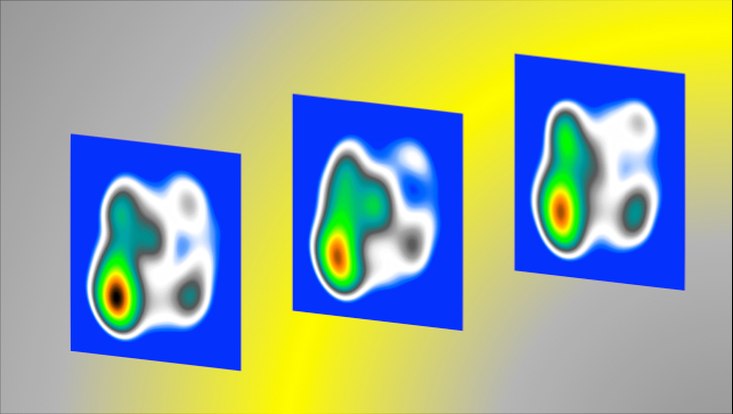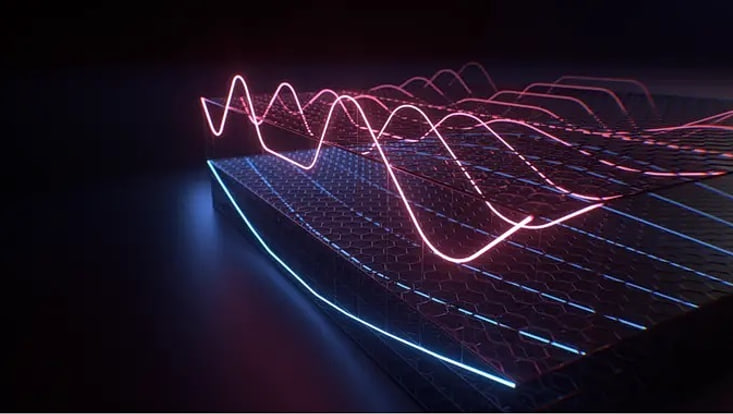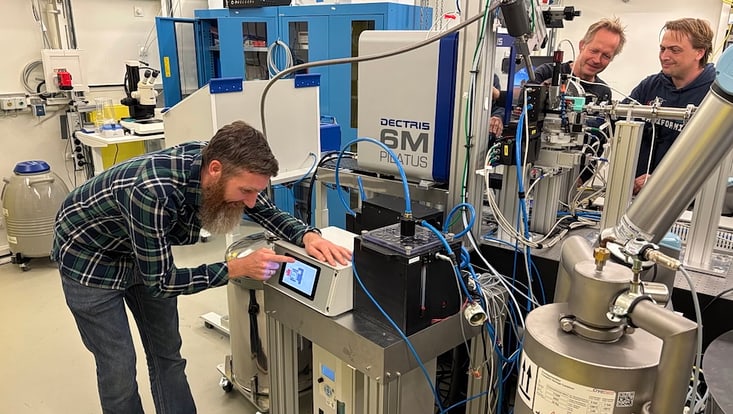Imaging of Matter
New paths for surface research
18 May 2022

Photo: UHH, Marvin Reuner und Daria Gorelova
Researchers from Universität Hamburg, the European XFEL and DESY have succeeded in establishing time-resolved orbital tomography at the free-electron laser (FEL). The team reports in the research journal Nature Communications on the new method, which makes it possible to observe the temporal change of the wave function of molecules. This process is crucial for any reaction of molecules on a surface and essential for the development of new functional devices.
Molecular adsorbates on solid surfaces form hybrid organic-inorganic materials whose properties are of great benefit for applications in optoelectronics, catalysis, or energy storage. However, for the development of new functional devices, it is essential to understand and control the behavior of electrons and atoms when excited by light.
Photoelectron microscopy can be used to visualize the electronic orbitals of molecules with atomic resolution. In doing so, the shape of the orbitals provides important insights into the properties of hybrid organic-inorganic materials. "We have extended this technique to the time domain to study dynamic processes at the hybrid interface that occur within a few picoseconds of optical excitation," says Daria Gorelova, a professor at Universität Hamburg and in the Cluster of Excellence "CUI: Advanced Imaging of Matter."
Ultrafast pulse microscopy will provide unprecedented insight
To understand the interplay between charge, electron and structural dynamics, the researchers studied photoexcited pentacene molecules adsorbed on a silver substrate. At the free-electron laser FLASH at DESY, they obtained time-resolved photoelectron momentum maps. These maps are snapshots of molecular orbitals and contain high-precision details about photoinduced electronic and nuclear transformations on sub-picosecond time scales. To interpret these data, the team developed a theoretical description of the photoelectron momentum maps; combining experimental data with calculations revealed the details of intramolecular electron and structural dynamics, as well as charge transfer dynamics at the interface.
"Ultrafast momentum microscopy will provide unprecedented insight into photon-triggered dynamics and open new avenues for surface research," says Markus Scholz, staff scientist at FLASH. Researchers from the Universities of Kiel and Würzburg and TU Freiberg were also involved in the work.
Reference
Kiana Baumgärtner, Marvin Reuner, Christian Metzger, Dmytro Kutnyakhov, Michael Heber, Federico Pressacco, Chul-Hee Min, Thiago Peixoto, Mario Reiser, Chan Kim, Wei Lu, Roman Shayduk, Manuel Izquierdo, Günter Brenner, Friedrich Roth, Achim Schoell, Serguei Molodtsov, Wilfried Wurth, Friedrich Reinert, Anders Madsen, Daria Popova-Gorelova, and Markus Scholz
“Ultrafast orbital tomography of a pentacene film using time-resolved momentum microscopy at a FEL”
Nature Communications 13, 2741 (2022)


